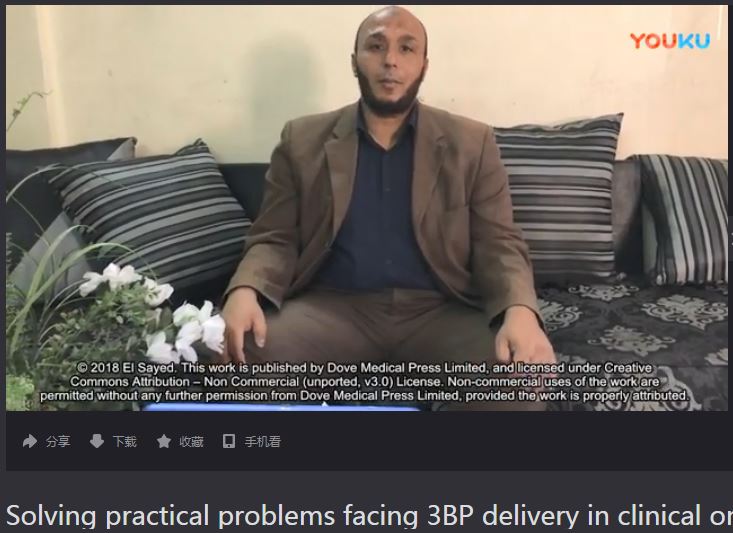9 0 5 7 8
论文已发表
注册即可获取德孚的最新动态
IF 收录期刊
- 2.6 Breast Cancer (Dove Med Press)
- 3.9 Clin Epidemiol
- 3.3 Cancer Manag Res
- 3.9 Infect Drug Resist
- 3.6 Clin Interv Aging
- 4.8 Drug Des Dev Ther
- 2.8 Int J Chronic Obstr
- 8.0 Int J Nanomed
- 2.3 Int J Women's Health
- 3.2 Neuropsych Dis Treat
- 4.0 OncoTargets Ther
- 2.2 Patient Prefer Adher
- 2.8 Ther Clin Risk Manag
- 2.7 J Pain Res
- 3.3 Diabet Metab Synd Ob
- 4.3 Psychol Res Behav Ma
- 3.4 Nat Sci Sleep
- 1.9 Pharmgenomics Pers Med
- 3.5 Risk Manag Healthc Policy
- 4.5 J Inflamm Res
- 2.3 Int J Gen Med
- 4.1 J Hepatocell Carcinoma
- 3.2 J Asthma Allergy
- 2.3 Clin Cosmet Investig Dermatol
- 3.3 J Multidiscip Healthc

Enhancing anticancer effects, decreasing risks and solving practical problems facing 3-bromopyruvate in clinical oncology: 10 years of research experience
Authors El Sayed SM
Received 9 April 2018
Accepted for publication 8 June 2018
Published 15 August 2018 Volume 2018:13 Pages 4699—4709
DOI https://doi.org/10.2147/IJN.S170564
Checked for plagiarism Yes
Review by Single-blind
Peer reviewers approved by Dr Cristina Weinberg
Peer reviewer comments 2
Editor who approved publication: Prof. Dr. Thomas J Webster
Abstract: 3-Bromopyruvate (3BP) is a promising powerful general anticancer
agent. Unfortunately, 3BP release faces many practical and biochemical problems
in clinical human oncology, for example, 3BP induces burning venous sensation
(during intravenous infusion) and rapid inactivation by thiol groups of
glutathione and proteins. 3BP exhibits resistance in glutathione-rich tumors
without being able to exert selective targeting. 3BP does not cross the
blood–brain barrier and cannot treat nervous system tumors. Importantly, 3BP
cannot persist in tumor tissues due to the phenomenon of enhanced permeability
and retention effect. Here, the author presents the practical solutions for
clinical problems facing 3BP use in clinical oncology, based on over 10 years
of experience in 3BP research. Crude (unformulated 3BP that is purchased from
chemical companies without being formulated in liposomes or other nanocarriers)
should not be administered in clinical oncology. Instead, 3BP is better
formulated with liposomes, polyethylene glycol (PEG), PEGylated liposomes
(stealth liposomes) or perillyl alcohol that are used currently with many
chemotherapeutics for treating clinical tumors in cancer patients. Formulating
3BP with targeted liposomes, for example, with folate, transferrin or other
ligands, improves tumor targeting. Formulating 3BP with liposomes, PEG, stealth
liposomes or perillyl alcohol may improve its pharmacokinetics, hide it from
thiols in the circulation, protect it from serum proteins and enzymes, prevent
burning sensation, prolong 3BP’s longevity and facilitate crossing the BBB.
Formulating 3BP with stealth liposomes protects 3BP from the
reticuloendothelial cells. Liposomal 3BP formulations may retain 3BP better
inside the relatively large tumor capillary pores (abolish enhanced
permeability and retention effect) sparing normal tissues, facilitate new
delivery routes for 3BP (eg, topical and intranasal 3BP administration using
perillyl alcohol) and improve cancer cytotoxicity. Formulating 3BP may be
promising in overcoming many obstacles in clinical oncology.
Keywords: 3-bromopyruvate,
3BP release, PEG formulation, practical problems, liposomes and targeting
cancer
